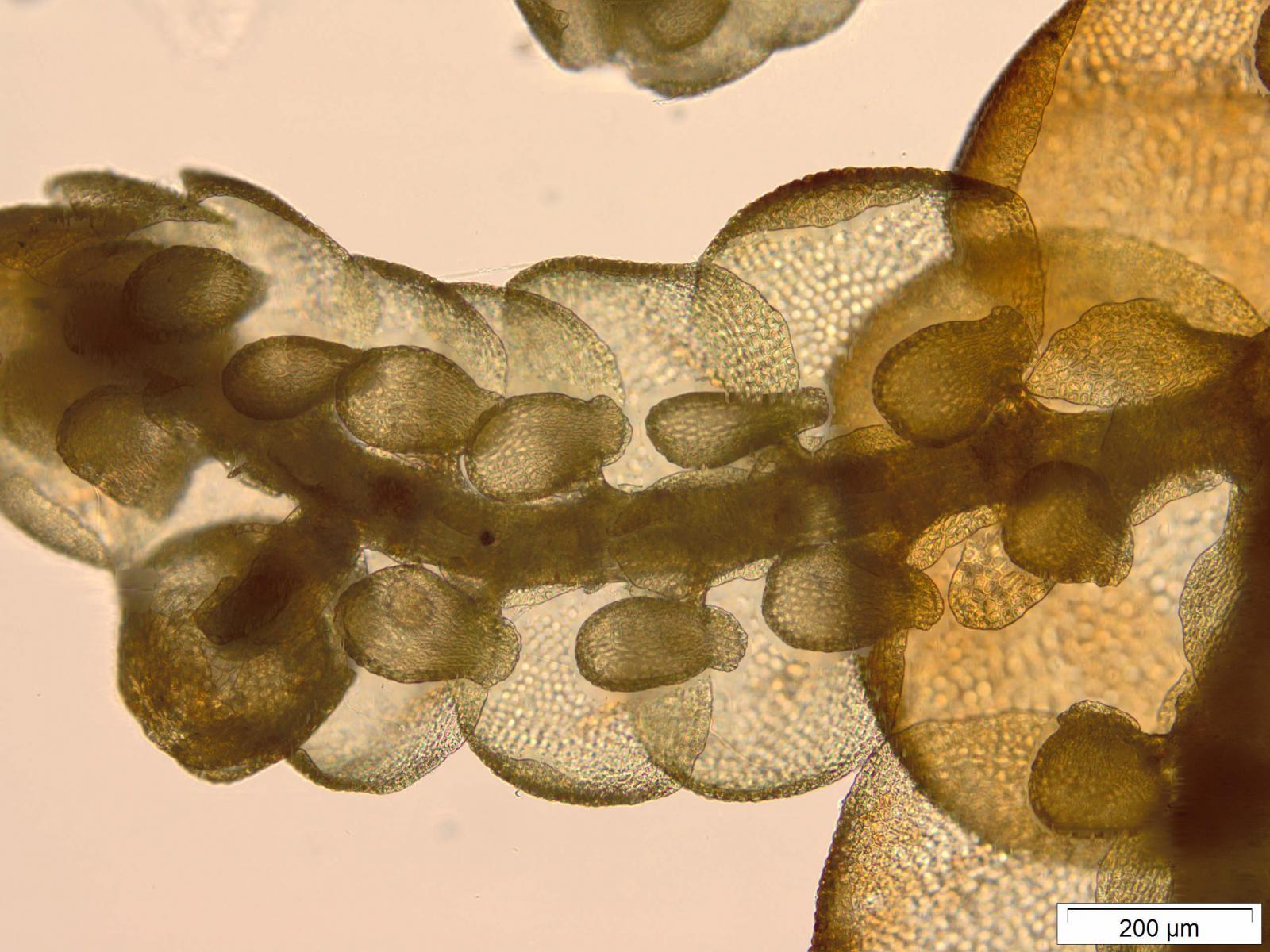
Details-de-Frullania-ericoides-a-droite-vue-macroscopique-en-haut-a-droite.png from: https://www.researchgate.net/figure/Details-de-Frullania-ericoides-a-droite-vue-macroscopique-en-haut-a-droite_fig19_344212210
Frullania ericoides: The Fascinating Moss of the Frullaniaceae Family
Introduction
Today we’re diving into the captivating world of Frullania ericoides (Nees) Mont., a unique moss species belonging to the Frullaniaceae family. Also known simply as Frullania, this tiny but mighty plant plays important ecological roles and boasts some remarkable adaptations. Let’s explore what makes Frullania ericoides so special!
Background
Frullania ericoides is classified under the division

cd0cb28cea896f0018ed04fb126bdb04.jpg from: http://blog.goo.ne.jp/mossphoenix/e/d3b4f9fcd1dc7b51f01b115022c69e89
Marchantiophyta and class Jungermanniopsida. The specific epithet “ericoides” means “heath-like”, referring to its resemblance to heather plants. This moss is found in many parts of the world, from tropical to temperate regions.
Morphology and Identification
Frullania ericoides forms small, reddish-brown mats on tree bark, rocks, and soil. Its shoots are irregularly branched and covered in tightly overlapping leaves arranged in two rows. The leaves have a unique shape with inflated, helmet-like lobules at the base. Identifying features also include the presence of underleaves (modified leaves on the underside of the stem) and smooth, reddish-brown rhizoids.
Global Distribution and Habitat
This cosmopolitan moss has a wide global distribution, found on every continent except Antarctica. It thrives in humid environments such as rainforests, cloud forests, and temperate woodlands. Frullania ericoides typically grows as an epiphyte on tree bark but can also colonize rocks and soil in shaded, moist locations.
Ecological Roles and Adaptations
As an epiphytic moss, Frullania ericoides plays a vital role in nutrient cycling and moisture retention

%25E6%259C%25AA%25E5%2591%25BD%25E5%2590%258D.JPG from: https://bryophytesintw.blogspot.com/2011/05/shan-hsiung-lin-bryophytes-of-chungliao_26.html
in forest ecosystems. Its mat-like growth traps water, providing a microhabitat for invertebrates

frullania_plates_new_cale_96.jpg from: https://bryophyteportal.org/portal/imagelib/imgdetails.php?imgid=209678
and other small organisms. The inflated leaf lobules are an adaptation for

a-i-Frullania-ericoides-a-perianth-beak-b-habit-scheme-dot-androecia-open-dot.png from: https://www.researchgate.net/figure/a-i-Frullania-ericoides-a-perianth-beak-b-habit-scheme-dot-androecia-open-dot_fig1_327378235
water storage, helping the moss survive periods of drought.
Frullania ericoides also exhibits allelopathy, producing chemicals that inhibit the growth of neighboring plants. This adaptation allows it to compete for space and resources on tree trunks and branches.

Frullania_ericoides_BS177_3tn.jpg from: https://bryophyteportal.org/portal/taxa/index.php?taxon=182932

1d28b8a24c1697e01fb159b625e2e140.jpg from: https://blog.goo.ne.jp/mossphoenix/e/d3b4f9fcd1dc7b51f01b115022c69e89

Frullania_ericoides,_perianth,I_MVK55.jpg from: https://www.discoverlife.org/mp/20p?see=I_MVK55&res=640

Frullania-ternatensis-Gottsche-A-Part-of-shoot-ventral-view-B-C-Leaves-D_Q640.jpg from: https://www.researchgate.net/figure/Frullania-vaginata-Sw-Nees-A-Part-of-shoot-ventral-view-note-the-distant_fig1_259872905

F_asagrayana_Shaw10657_ce.jpg from: https://bryophyteportal.org/frullania/imagelib/imgdetails.php?imgid=100942
| Characteristic | Description |
|---|---|
| Division | Marchantiophyta |
| Class | Jungermanniopsida |
| Family | Frullaniaceae |
| Genus | Frullania |
| Species | F. ericoides |
| Growth Form | Mat-forming, epiphytic |
| Leaf Arrangement | Two rows, overlapping |
| Leaf Shape | With inflated, helmet-like lobules |
| Underleaves | Present |
| Rhizoids | Smooth, reddish-brown |
Conclusion
Frullania ericoides may be small, but it packs a punch in terms of ecological importance and fascinating adaptations. From its global distribution to its allelopathic properties, this moss is a true wonder of the plant kingdom. The next time you’re out in nature, keep an eye out for the reddish-brown mats of Frullania – you might just be looking at a miniature ecosystem thriving on a tree trunk! What other secrets do you think this mighty moss holds?